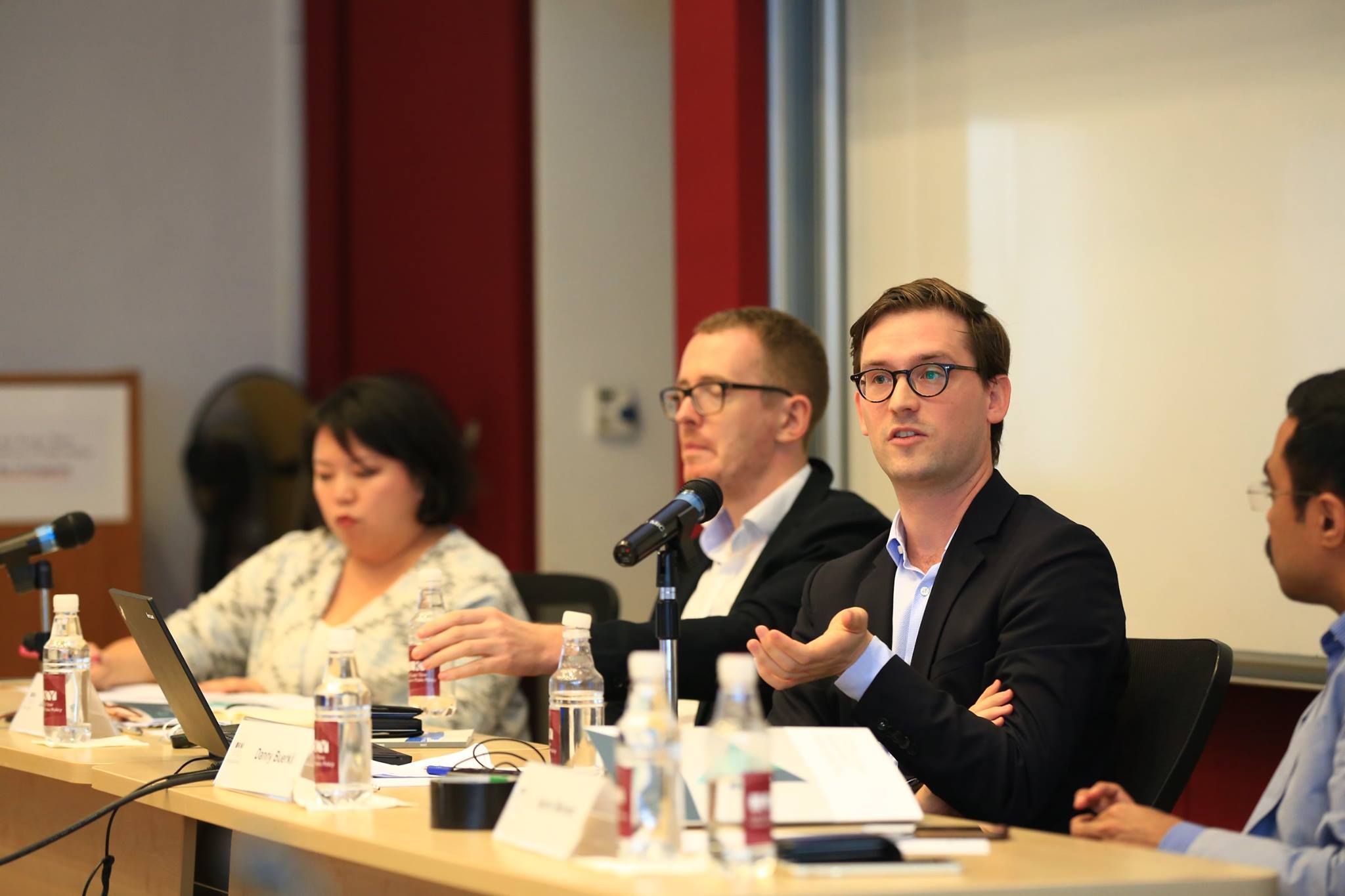Picking the right tools for innovation labs
By Centre for Public Impact
Impact should always be the focus of new ideas, says Danny Buerkli from the Centre for Public Impact.

Image: Centre for Public Impact/Facebook
But governments are building ‘labs’ to create a safe space to experiment, try new ways of solving problems, and develop new skills. “There is a strong case for governments building a space where they can offer that expertise internally,” says Danny Buerkli, Programme Director at the Centre for Public Impact (CPI), a non-profit funded by The Boston Consulting Group.
One of the first innovation labs was Denmark’s MindLab, which works with departments across the government. And this year, Buerkli co-founded staatslabor, a government innovation lab in his native Switzerland. But they’re not all permanent units with a physical space. Increasingly, countries such as New Zealand and the UAE have set up labs for people from different agencies - and the private sector in some cases - to work together on a problem.
But the toolbox for experimentation is often very confusing to navigate, Buerkli adds. GovInsider sat down with him to find out how civil servants should pick the right path forwards.
Inside the toolbox
Buerkli’s advice is straightforward: “Always go by impact, rather than novelty”. CPI has developed a framework that can help governments understand whether a tool, technology or approach brings about impact. Three key principles - policy, action and legitimacy - called the Public Impact Fundamentals can determine whether they will be impactful, CPI has found.
“Always go by impact, rather than novelty.”The Fundamentals help civil servants understand what exactly an innovative method contributes to a particular challenge. Think of them as “a structuring principle to navigate the slightly unwieldy landscape of government innovation methods and tools”.
For instance, design thinking helps on all three fronts of public impact, Buerkli explains. It can help increase legitimacy because “you bring in a lot of different stakeholders into the room”. It can improve policy by encouraging civil servants to test and prototype what they have in mind. And finally, it helps with putting them to action by surfacing implementation problems early on.
The Fundamentals help governments to zero in and focus on the impact of the tool above another other aspect. As a result, it appears that sometimes the best solutions are simple ones. One government department redesigned forms with user experience design. “It doesn’t sound like very much, but it’s actually quite a radical move to acknowledge that primarily, this needs to work for the use of citizens,” Buerkli adds.
On the other end, Artificial Intelligence is a new and very complex tool in the government lab. There are two key things the Fundamentals show about AI. The first is that “the distinction between policy and action will start to vanish,” he says. Traditionally, governments have been slow at getting feedback on policies, changing them, and then implementing them again. “With AI, you can imagine a world where this happens at a much faster clip”, he explains, “where we experiment and make small tweaks based on what an algorithm suggests”.
The second is that “legitimacy is a big issue with AI”, he says. Governments should be concerned about how they can build legitimacy for this technology and ensure citizens are happy for government to be using it. Even with the most amazing algorithms and perfect datasets, “if citizens don’t believe this is legitimate, it won’t achieve impact ultimately,” Buerkli says.
Enter the public impact lab
Inspired by the progress and style of working of other innovation labs, CPI is in the process of launching a new product, Public Impact Labs, which will work with governments to find solutions to their most pressing problems. Unlike many other innovation labs, it’s not an institution with a permanent office. Instead, the labs will be based in government offices, where civil servants are already working on issues, and last up to two days at a time.
The lab will be an “immersive experience” bringing together a diverse group of stakeholders, including central government officials, line ministries, frontline staff and affected citizens. “Crucially, we start with a problem, not with policy,” Buerkli says.
“Crucially, we start with a problem, not with policy.”The Public Impact Lab will use the Fundamentals as a guide to work out ways for government to improve impact in that particular area. It will also use technologies such as virtual reality to “transport people into the setting of the problem”, he adds, to help officials empathise and really understand what citizens experience.
Change and experimentation is harder in government than elsewhere, Buerkli says, and the tools are many. CPI is helping civil servants get this down to a science.